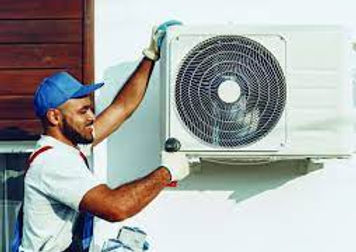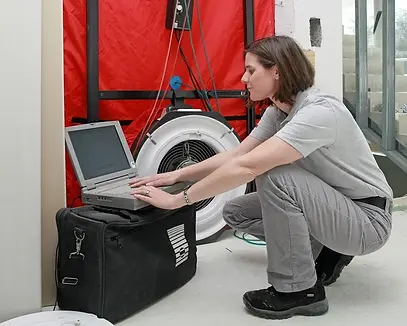
10 Best Practices for Stove Change-out Programs
Updated: September 2024

The following 10 suggested best practices for change-out programs were compiled, in part, from recommendations we received from managers of change-out programs and other experts. The larger the budget of the program, the greater number of best practices can be included. Some change-out programs already include 6 to 8 of these suggested best practices. Two of the suggested best practices are just emerging: No program formally integrates energy audit and weatherization programs, as far as we know. The Alliance for Green Heat is available to assist program managers who wish to integrate these best practices into their stove change-out programs.
1. Prioritize who gets funds. Higher priority should go to homes that use wood as a primary heating source, lower income homes, homes in more densely populated areas, homes where air quality is particularly problematic, and/or homes that have wood sheds. Focusing on wood heated homes in densely populated areas may be the most underused common sense strategy. The first come, first serve model wastes precious funds. These priorities should also help meet equity objectives by focusing on low-income homes in densely inhabited low-income areas.
2. Give higher rebates to pellet stoves and heat pumps. Pellet stoves and heat pumps should be the only eligible appliances in densely populated areas - where cord wood stoves are not appropriate. Higher rebates should be offered for pellet stoves, in part because, unlike wood stoves, they tend to burn nearly as cleanly in the field as in the lab. Programs should also consider providing higher rebates for automated wood stoves as they come on the market because in part, they should prevent smoldering conditions. This emerging class or stoves deserves recognition and support if wood stoves are to be included. Depending on various factors, it may be best not to require the removal of a wood stove when adding a heat pump, since heat pumps can greatly reduce the use of wood stoves, and help people make the transition. Some change out programs are already using this strategy.

3. Eligibility of stoves used to be more of an issue, when stoves were allowed to emit up to 4.5 grams an hour. We do not recommend using the list of stoves developed by Alaska, since there is no evidence those stoves are any cleaner, and it overly restricts what is usually available from local stove retailers. ADEC was very successful in demonstrating how lax the EPA certification process had become and getting the EPA more resources to fix it. But using their list in a change-out program would likely have no impact on local airsheds. For pellet stoves, we support excluding models that are less than 70% efficient. We support very limited, targeted change outs to gas appliances in only the most polluted areas.
4. Right size rebate. Some programs are so popular that they close applications in a matter of days. This may mean that the rebate was too high and fewer change-outs will occur than with a lower rebate.
5. Education, outreach, and social media need to be built into all phases of the change-out. The application should be used to ask questions about key issues, provide links to key information and get promises to follow Burn Wise practices. Required classes on stove operation can be considered. In addition to print literature, consider giving a moisture meter to participants (a practice Travis Industries began in 2013), stove thermostat, and/or plans to build a wood shed with each stove. (One program in Washington has a wood shed incentive for qualifying residents.)

6. Bounty programs provide consumers a smaller incentive ($100 - $350) to turn in an old wood stove. Or a bounty could go to stove retailers for any stove they remove and destroy in the regular course of their business. Bounty programs should be considered on a year-round basis, or in advance and in conjunction with a change-out program. Bounty programs remove stoves far more cheaply than change-outs, and may attract a different demographic.
7. Give consumers options not just on heating technologies, but also on whether to purchase from a specialty hearth retailer or a big box store. As long as professional installation is required, big box stores can make all the difference for low and middle-income families to participate in a change-out. This is an underutilized strategy to support equity goals that has been overlooked by the EPA and states. Rebate programs can offer this choice more easily when the store does not have to be pre-approved. Programs should always urge consumers to get multiple quotes and learn about various options for purchasing stoves and professionally installing them.
8. Advance policy steps. Prior to a change-out, there are multiple steps jurisdictions should undertake if they are serious about reducing residential wood smoke.
-
Require permits and inspections for all future installs. This is one of the easiest and cheapest ways to ensure stoves are safety installed and do not emit excessive smoke due to poor installation.
-
Disallow the resale and installation of uncertified cord wood stoves. Even if this practice is not enforced many people will abide by it.
State or federal funding could give preference to jurisdictions that take advance policy steps to ensure a change-out has long lasting benefits. The states of Washington and Oregon already forbid the resale and installation of uncertified stoves, as does the Denver-Metro Area in Colorado, and San Joaquin Valley and the Town of Mammoth Lakes in California. In addition, jurisdictions may also want to require permits and inspections on all stove installs in the future. For example, Marin County, California forbids the installation of uncertified stoves in new constructions or remodels (see: Ordinance 3395). The most aggressive policy step requires removing old stoves upon sale of a home, as is required in Oregon. More examples of uncertified wood stove regulations can be found here.
9. Energy audits, weatherization and low-income programs. Wood stoves should be integrated into the jurisdiction’s subsidized energy audits and weatherization programs in order to educate homeowners, identify obsolete stoves and repair or replace stoves with non-change-out funding. Most low-income heating programs should replace a dangerous installed stove for free if the family qualifies for heating assistance and the stove is their primary heater. Change-outs should always link to those programs and maximize that support. We offer some suggestions about how to incorporate stoves into energy audits here. New York initially tried to require an energy audit in their change-out, but the way it was designed depressed participation, so it was dropped.

10. Evaluation and monitoring. A plan for program evaluation and monitoring should be integrated from the start. This plan should engage key stakeholders and the results should be made public on the program website. Metrics should include the number of low-income homes served, the number of unsafe stove installations that were removed, the success in integrating energy audits and weatherization programs, whether any other policy steps (see above) were taken, as well as a review of other criteria listed in these Ten Best Practices.
